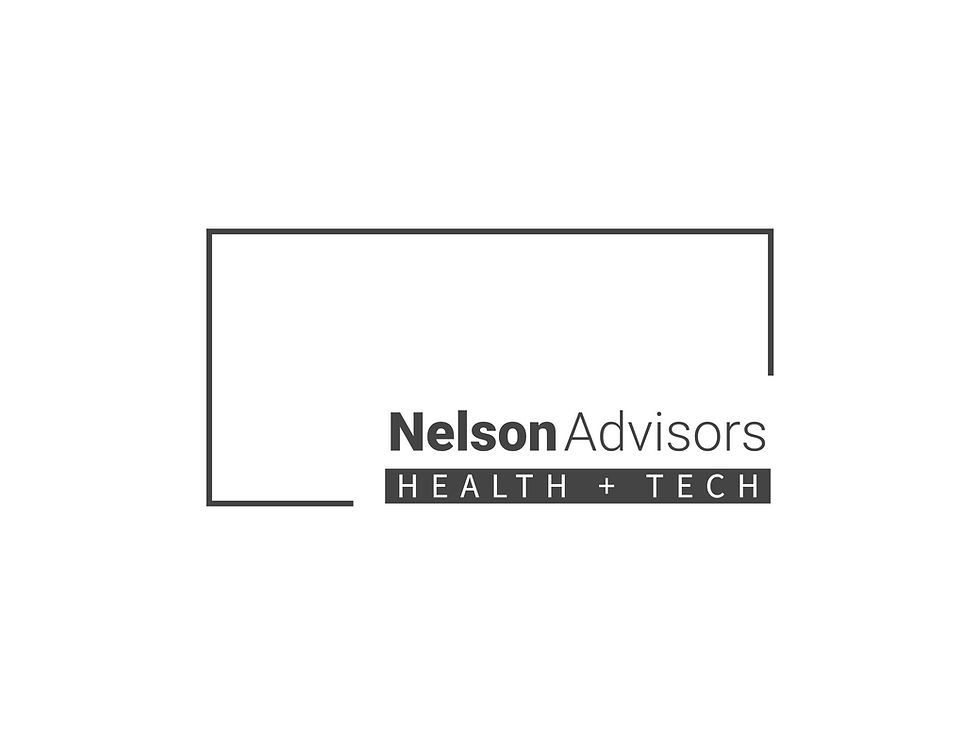Future of telemedicine and virtual care: key trends and predictions
- Lloyd Price
- May 17, 2023
- 7 min read
Updated: May 19, 2024

Executive Summary:
The future of telemedicine is poised to be promising and transformative, driven by advancements in technology, changing patient preferences, and evolving healthcare needs.
Here are some key aspects that are likely to shape the future of telemedicine:
Continued growth and adoption: Telemedicine has experienced significant growth and adoption, particularly accelerated by the COVID-19 pandemic. This momentum is expected to continue as patients and healthcare providers recognize the convenience, accessibility, and cost-effectiveness of virtual care. Telemedicine is likely to become an integral part of healthcare delivery, expanding across various medical specialties and regions.
Enhanced technological capabilities: Advancements in technology will play a crucial role in shaping the future of telemedicine. This includes improved video conferencing platforms, remote monitoring devices, wearable sensors, AI-powered diagnostic tools, and virtual reality applications. These technological advancements will enhance the quality and scope of telemedicine services, enabling more comprehensive and personalised care delivery.
Integration with other healthcare technologies: Telemedicine is expected to integrate with other healthcare technologies, such as electronic health records (EHRs), remote patient monitoring systems, data analytics platforms, and AI algorithms. This integration will enable seamless information exchange, real-time monitoring, and data-driven insights, leading to more comprehensive and coordinated care.
Expansion of telemedicine beyond primary care: While telemedicine initially gained popularity in primary care settings, it is increasingly being adopted in specialty care areas. Specialties such as dermatology, psychiatry, radiology, and cardiology are embracing telemedicine to improve access to specialized care, reduce wait times, and enhance collaboration between specialists.
Hybrid care models: The future of telemedicine is likely to involve hybrid care models that combine both in-person and virtual visits. Healthcare providers may adopt a blended approach, where they can leverage telemedicine for routine follow-ups, chronic disease management, post-operative care, and patient education, while reserving in-person visits for more complex cases or procedures that require physical examination.
Regulatory and reimbursement advancements: Regulatory bodies and insurers have made significant strides in adapting to the telemedicine landscape. The future will likely see further developments in regulations and reimbursement policies to support and incentivize telemedicine adoption. This may include expanded coverage, standardized guidelines, and increased reimbursement rates for telemedicine services.
Improved access to underserved populations: Telemedicine has the potential to address healthcare disparities by improving access to care for underserved populations, including those in rural areas, remote communities, and regions with limited healthcare resources. By eliminating geographic barriers, telemedicine can connect patients with healthcare providers, specialists, and resources that were previously inaccessible.
It's important to note that while telemedicine offers numerous benefits, there are challenges to address, such as ensuring equitable access, maintaining patient privacy and data security, and addressing regulatory and licensure considerations across jurisdictions. Overcoming these challenges will require collaboration between healthcare stakeholders, technology providers, policymakers, and regulatory bodies.
Overall, the future of telemedicine holds tremendous potential to revolutionize healthcare delivery, improve patient outcomes, and enhance healthcare accessibility and convenience.
Mergers, Acquisitions, Growth and Strategy for Healthcare Technology companies
HealthTech M&A - Buy Side, Sell Side, Growth & Strategy services for companies in Europe, Middle East and Africa. Visit www.nelsonadvisors.co.uk
HealthTech M&A Newsletter from Nelson Advisors - HealthTech, Health IT, Digital Health Insights and Analysis. Subscribe Today! https://lnkd.in/e5hTp_xb
Healthcare Technology Buy Side, Sell Side, Growth & Strategy services for Founders, Owners and Investors. Email lloyd@nelsonadvisors.co.uk
Healthcare Technology Thought Leadership from Nelson Advisors – Market Insights, Analysis & Predictions. Visit https://lnkd.in/ezyUh5i

Future of Telemedicine
The future of telemedicine is bright. The COVID-19 pandemic has accelerated the adoption of telemedicine, and it is now widely accepted as a safe and effective way to deliver healthcare.
There are a number of factors that are driving the growth of telemedicine. These include:
The increasing availability of high-speed internet: High-speed internet is essential for telemedicine, as it allows for high-quality video and audio communication. The increasing availability of high-speed internet is making telemedicine more accessible to people in rural and underserved areas.
The development of new technologies: New technologies, such as telepresence robots and virtual reality, are making telemedicine more immersive and interactive. This is making it easier for patients to connect with their doctors and receive the care they need.
The rising cost of healthcare: The rising cost of healthcare is making patients more interested in cost-saving alternatives, such as telemedicine. Telemedicine can help patients save money on transportation, parking, and copays.
The increasing demand for convenience: Patients are increasingly demanding convenience when it comes to healthcare. Telemedicine can provide patients with the convenience of receiving care from the comfort of their own homes.
As the demand for telemedicine continues to grow, we can expect to see even more innovation in this space. Telemedicine is poised to revolutionize the way healthcare is delivered, and it has the potential to improve access to care, reduce costs, and improve patient outcomes.

Here are some specific trends that are expected to shape the future of telemedicine:
Increased use of artificial intelligence (AI): AI is being used to develop new telemedicine technologies, such as virtual assistants that can answer patients' questions and provide them with information. AI is also being used to develop new telemedicine applications, such as AI-powered diagnostic tools that can help doctors diagnose diseases more accurately.
Increased use of wearable devices: Wearable devices are being used to collect data on patients' health and activity levels. This data can then be used to monitor patients' health, identify any potential problems early on, and provide personalised feedback and advice.
Increased use of remote patient monitoring: Remote patient monitoring is the use of technology to monitor patients' health remotely. This can be done through wearable devices, sensors, or video conferencing. Remote patient monitoring can help patients manage their chronic diseases more effectively and reduce the need for in-person visits.
Increased use of telesurgery: Telesurgery is the use of technology to perform surgery remotely. This is done through the use of robots or cameras that allow surgeons to operate on patients from a distance. Telesurgery can be used to provide surgery to patients in rural or underserved areas who would otherwise not have access to this care.
These are just some of the trends that are expected to shape the future of telemedicine. As telemedicine continues to evolve, it has the potential to revolutionize the way healthcare is delivered.
Future of Virtual Care
The COVID-19 pandemic has accelerated the adoption of virtual care, and it is now widely accepted as a safe and effective way to deliver healthcare.
As the demand for virtual care continues to grow, we can expect to see even more innovation in this space. Virtual care is poised to revolutionise the way healthcare is delivered, and it has the potential to improve access to care, reduce costs, and improve patient outcomes.

Here are some notable trends that are likely to influence the future of virtual care:
Expansion of Remote Monitoring: Remote patient monitoring (RPM) allows healthcare providers to collect patient data outside of traditional healthcare settings. It involves the use of wearable devices, sensors, and mobile applications to monitor vital signs, symptoms, medication adherence, and other health-related data. The future of virtual care will see an increased emphasis on RPM, enabling proactive and continuous monitoring of patients' health conditions and facilitating early intervention when needed.
Integration of Artificial Intelligence (AI): AI has the potential to transform virtual care by enhancing diagnostic accuracy, enabling personalised care recommendations, and improving patient triage. Machine learning algorithms can analyze vast amounts of patient data, including medical images, lab results, and electronic health records, to provide insights and support clinical decision-making. AI-powered virtual assistants and chatbots can also assist in delivering personalized care and answering patient queries.
Hybrid Care Models: The future of virtual care will likely involve hybrid care models that combine in-person and virtual visits. Hybrid models allow healthcare providers to leverage the convenience and efficiency of virtual care while preserving the importance of face-to-face interactions for certain aspects of care, such as physical examinations or procedures requiring in-person presence. Hybrid care models aim to optimize patient experience, improve outcomes, and increase healthcare system efficiency.
Enhanced Telehealth Platforms: Telehealth platforms will continue to evolve, offering improved user experiences, better integration with electronic health records (EHRs), and expanded functionalities. Future telehealth platforms may integrate video consultations, secure messaging, scheduling, billing, and access to patient data, providing a comprehensive virtual care solution. User-friendly interfaces, interoperability, and seamless integration with existing healthcare systems will be key focus areas.
Virtual Specialty Care: While virtual care has primarily been associated with primary care, there is an increasing focus on expanding virtual specialty care. Specialties such as dermatology, mental health, cardiology, radiology, and neurology are incorporating virtual care into their practices. Advancements in telemedicine technology, including high-quality imaging, remote diagnostic tools, and teleconsultation capabilities, enable specialists to provide remote consultations, diagnoses, and treatment recommendations.
Regulatory and Policy Support: Regulatory bodies and policymakers are adapting to the increasing demand for virtual care. Future trends may include streamlined licensure requirements for telehealth practitioners, expanded reimbursement policies to support virtual care services, and the development of telehealth-specific regulations. Regulatory support and policies that ensure patient privacy, data security, and quality of care will be crucial in shaping the future of virtual care.
Patient-Centred Care and Engagement: Virtual care models will prioritise patient-centered care and engagement. Patient portals, mobile applications, and remote monitoring devices empower patients to actively participate in their care management, access their health information, communicate with healthcare providers, and receive personalized education and support. The future of virtual care will focus on enhancing patient engagement and satisfaction to drive better health outcomes.
It's important to note that while these trends are anticipated, the future of virtual care will be shaped by various factors such as technological advancements, healthcare policies, patient preferences, and healthcare system dynamics. Continued collaboration between healthcare providers, technology companies, policymakers, and regulatory bodies will be essential in realizing the full potential of virtual care.
Mergers, Acquisitions, Growth and Strategy for Healthcare Technology companies
HealthTech M&A - Buy Side, Sell Side, Growth & Strategy services for companies in Europe, Middle East and Africa. Visit www.nelsonadvisors.co.uk
HealthTech M&A Newsletter from Nelson Advisors - HealthTech, Health IT, Digital Health Insights and Analysis. Subscribe Today! https://lnkd.in/e5hTp_xb
Healthcare Technology Buy Side, Sell Side, Growth & Strategy services for Founders, Owners and Investors. Email lloyd@nelsonadvisors.co.uk
Healthcare Technology Thought Leadership from Nelson Advisors – Market Insights, Analysis & Predictions. Visit https://lnkd.in/ezyUh5i


















































Comments